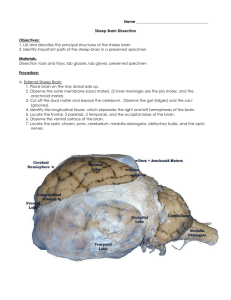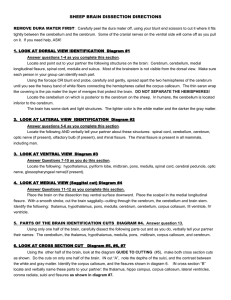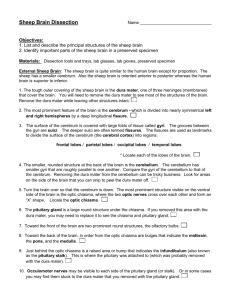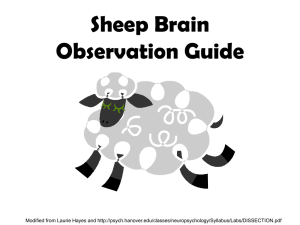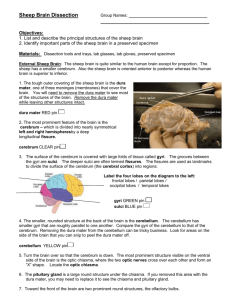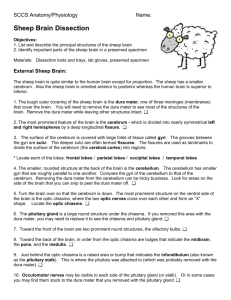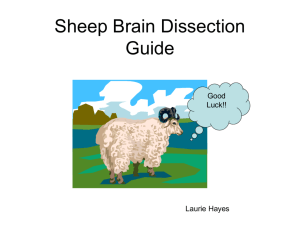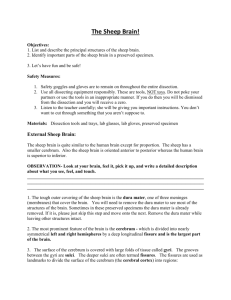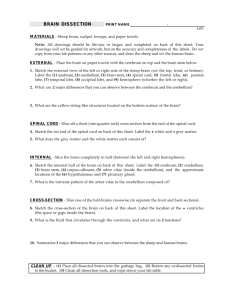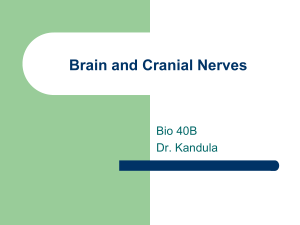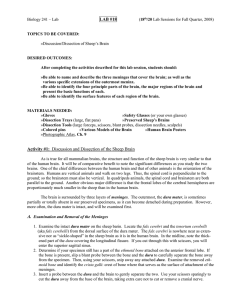File
advertisement
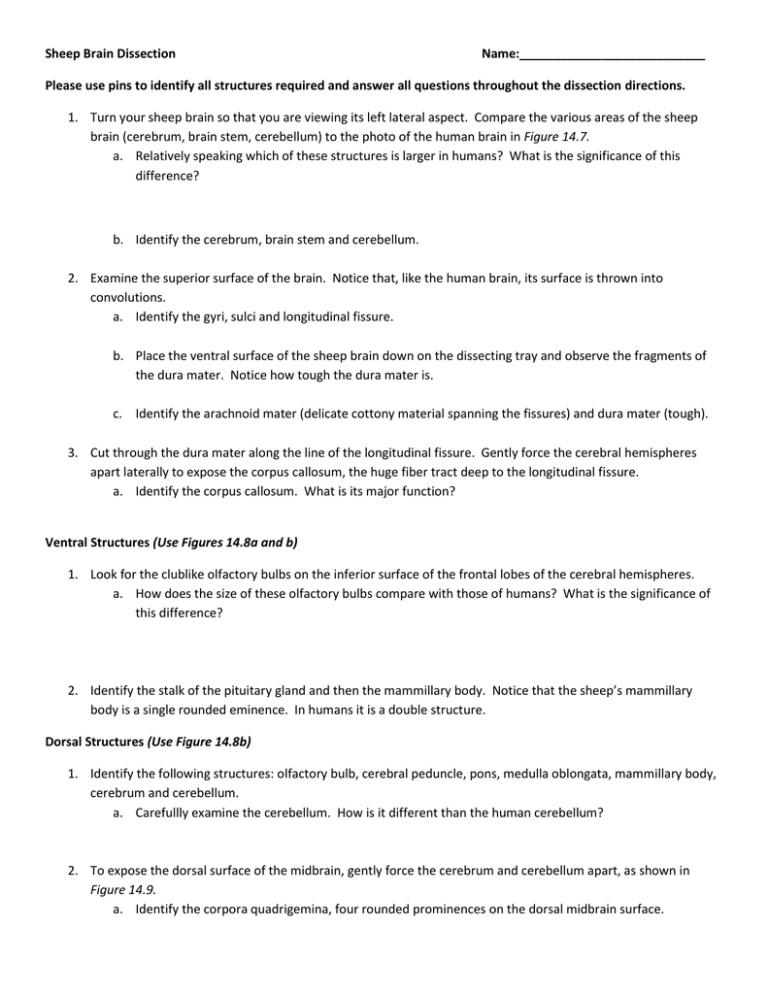
Sheep Brain Dissection Name:___________________________ Please use pins to identify all structures required and answer all questions throughout the dissection directions. 1. Turn your sheep brain so that you are viewing its left lateral aspect. Compare the various areas of the sheep brain (cerebrum, brain stem, cerebellum) to the photo of the human brain in Figure 14.7. a. Relatively speaking which of these structures is larger in humans? What is the significance of this difference? b. Identify the cerebrum, brain stem and cerebellum. 2. Examine the superior surface of the brain. Notice that, like the human brain, its surface is thrown into convolutions. a. Identify the gyri, sulci and longitudinal fissure. b. Place the ventral surface of the sheep brain down on the dissecting tray and observe the fragments of the dura mater. Notice how tough the dura mater is. c. Identify the arachnoid mater (delicate cottony material spanning the fissures) and dura mater (tough). 3. Cut through the dura mater along the line of the longitudinal fissure. Gently force the cerebral hemispheres apart laterally to expose the corpus callosum, the huge fiber tract deep to the longitudinal fissure. a. Identify the corpus callosum. What is its major function? Ventral Structures (Use Figures 14.8a and b) 1. Look for the clublike olfactory bulbs on the inferior surface of the frontal lobes of the cerebral hemispheres. a. How does the size of these olfactory bulbs compare with those of humans? What is the significance of this difference? 2. Identify the stalk of the pituitary gland and then the mammillary body. Notice that the sheep’s mammillary body is a single rounded eminence. In humans it is a double structure. Dorsal Structures (Use Figure 14.8b) 1. Identify the following structures: olfactory bulb, cerebral peduncle, pons, medulla oblongata, mammillary body, cerebrum and cerebellum. a. Carefullly examine the cerebellum. How is it different than the human cerebellum? 2. To expose the dorsal surface of the midbrain, gently force the cerebrum and cerebellum apart, as shown in Figure 14.9. a. Identify the corpora quadrigemina, four rounded prominences on the dorsal midbrain surface. b. What is the function of the corpora quadrigemina? c. Identify the pineal body, which appears as a small oval protrusion in the midline just anterior to the corpora quadrigemina. Internal Structures 1. Position the brain ventral side down and make a cut completely through it in a superior to inferior direction. Cut through the longitudinal fissure, corpus callosum and midline of the cerebellum. Refer to Figure 14.10 as you work. 2. Identify the thalamus, which forms the walls of the 3rd ventricle. 3. Identify the hypothalamus which forms the floor of the 3rd ventricle. a. Identify the optic chiasma, stalk of the pituitary gland and mammillary body on its exterior surface. b. Also, identify the pineal body at the posterior end of the 3rd ventricle and location of the epithalamus. 4. Locate the midbrain by identifying the corpora quadrigemina that form its dorsal roof. Follow the cerebral aqueduct through the midbrain tissue to the 4th ventricle. a. Identify the cerebral peduncles, which form the anterior walls of the 4th ventricle. 5. Identify the pons and medulla. The medulla continues into the spinal cord without any obvious change. 6. Identify the cerebellum. Notice the internal treelike arrangement of its white matter called the arbor vitae. Questions 1. Describe the relative hardness of the sheep brain tissue as noticed when you were cutting into it. a. Because formalin hardens all tissue, what conclusions might be drawn about the relative hardness and texture of living brain tissue? 2. What structures make up the brain stem and name their major function? 3. What structures make up the diencephalon and name their major function?
